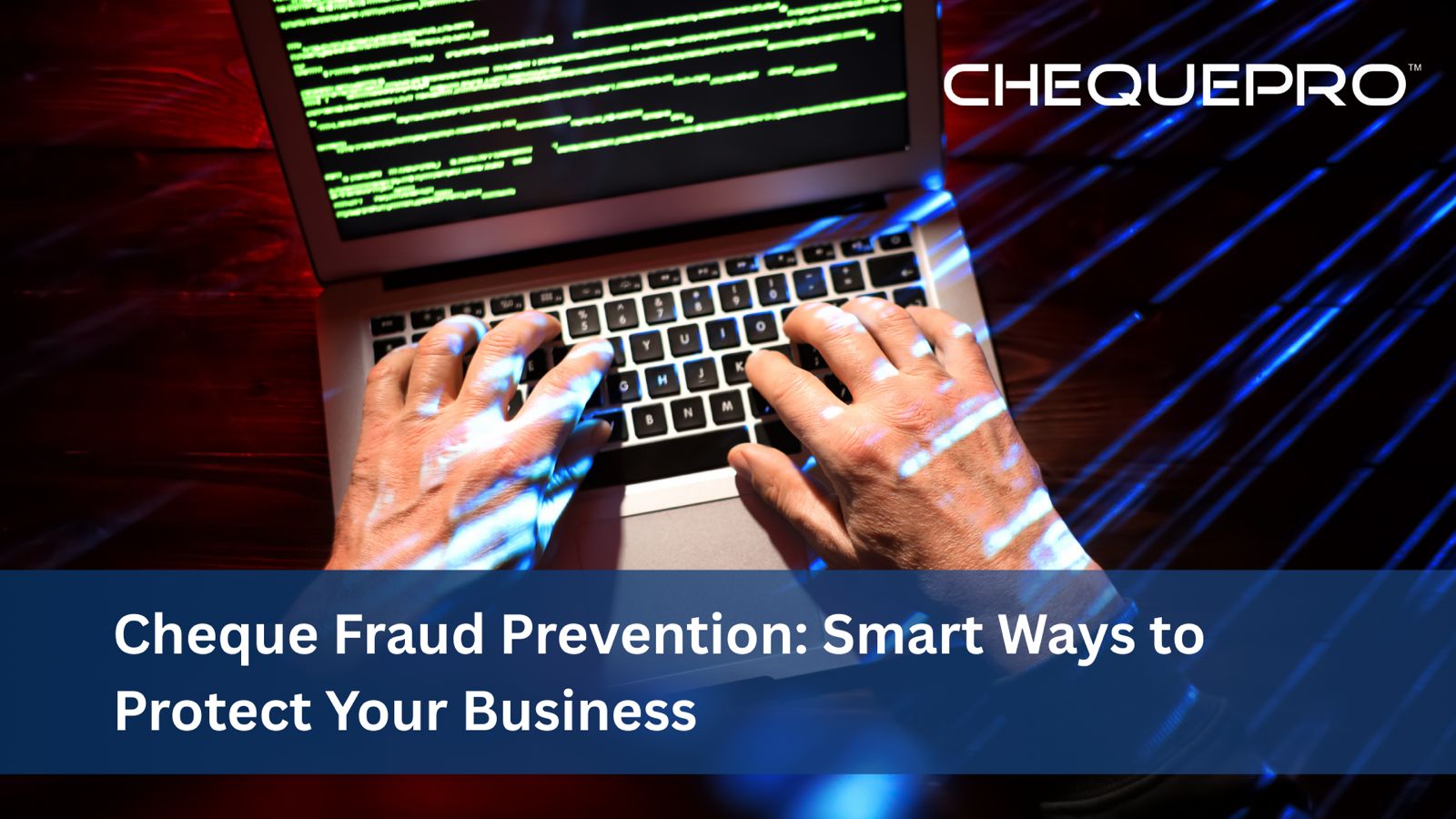Introduction
Cheques might seem old-fashioned in an age of immediate digital transfers, yet they continue to have a crucial role in business transactions. Numerous companies employ them, and that continuous dependency has turned cheque payments into a top priority area for the criminal underworld.
Cheque fraud has emerged as one of the largest financial threats to businesses in 2025, and it is unfolding rapidly worldwide. Over two-fifths of organisations reported experiencing attempts at cheque fraud in 2024, according to the Association for Financial Professionals. India, the United States, and Europe experienced especially large losses.
Fraudsters these days are using old tricks alongside cyber scams, so this is a changing issue that needs to be treated seriously by every business. In this blog, we take a look at smart ways to protect your business from cheque fraud.
What is Cheque Fraud?
Cheque fraud occurs when a cheque is altered, forged, copied, or used fraudulently to appropriate funds. It is significant because:
- Cheques are tangible and can be intercepted during transfer.
- They depend significantly on manual signatures, which are more susceptible to being forged.
- Cheques do not have automated verification layers like electronic transfers.
- One counterfeit cheque can lead to huge financial losses and damage to reputation.
Also Read: From Manual to Digital: Upgrade Your Payment Process With Cheque Printing Software
Smart Ways To Prevent Your Business From Cheque Fraud
In this new age digital world, banks and businesses need to upgrade their payment processes so as to prevent attacks by scammers. Let’s take a look at some of these ways to prevent cheque fraud.
Implement Positive Pay Systems
Positive Pay is an effective anti-fraud defence mechanism against cheque fraud. In this system,
- You give your bank a list of all cheques issued.
- The bank checks each cheque that is presented for payment against your list.
- Any cheque with a mismatched amount, date, payee name, or cheque number is flagged.
- This system prevents fraudulent transactions before funds depart from the account.
Secure Physical Cheques and Payment Information
Simple handling practices can go a long way in lowering risk:
- Keep blank cheques in locked files or safes.
- Shred unused or cancelled cheques to prevent any possibility of reissue.
- Don’t leave outgoing cheques in common mailboxes. Send via certified mail or secure drop boxes.
- Limit cheque access to authorised staff members only, so as to prevent any internal fraud.
Educate Staff to Identify Suspicious Behaviour
- Your staff are the first line of defence. Teach them to verify any sudden changes in vendor payment details instead of taking them at face value.
- Don’t just trust an email that says “make this payment right now.” Pick up the phone, confirm with the vendor or manager, and then act. That extra two minutes can save you from a massive loss.
- If a cheque amount looks strange or the request feels out of place, always verify and double-check.
Monitor Bank Accounts Regularly
- Don’t wait for the monthly statement to find problems. Log in every day, scan the account, and make sure everything looks normal.
- Set up alerts for big payments or when payee details change. Getting that instant notification means you can react before the money’s gone.
- Stay in touch with your bank, because they can freeze activity before it turns into a bigger loss if something ever looks suspicious.
Apply AI-Based Fraud Detection Tools
- AI can catch things faster. Use platforms that scan transactions for unusual activity or repeated cheque deposits.
- Machine learning is powerful. It adapts as new fraud techniques show up and keeps improving over time.
- Banks already use this tech, but businesses can install their own AI systems too for added protection.
Install Strong Internal Controls
- Always insist on two or more authorisations before cashing out big cheque payments.
- Arrange constant audits to check cheque utilisation and payment systems.
- Interchange personnel who deal with cheques so that one individual does not dominate the process for extended periods.
- Separate responsibilities. The individual giving cheques should not be the same one accounting for them.
Use High-Security Cheques and Cheque Printing Software
- To prevent these errors associated with the manual processing of cheques, you can choose to invest in a good cheque printing software like ChequePRO. This software offers various features and security levels to prevent any cheque fraud. I have listed some of its features below:
- Its tamper-proof fields verify if any details were modified by scammers.
- It also employs data encryption to protect sensitive information while it’s being printed.
- Its feature of automated formatting helps prevent amount, date, and name errors.
- Employs a Maker-Checker user authorisation control so cheques may only be printed by authorised people.
Also Read: The Future of Digital Signatures in Business Transactions
Conclusion
Cheque fraud is evolving fast, with fraudsters employing new cheque manipulation techniques as well as modern cybercrime. Businesses that use cheques can not afford to ignore it as a risk.
Through Positive Pay, investing in secure printing machines, educating staff on the risks of fraudulent cheques, and checking accounts on a daily basis, companies are able to build a solid layer of security. All these combined avoid not only loss but also build confidence among clients, suppliers, and financial partners.
If your company is still issuing cheques, it’s high time to beef up your defences. One such strategy is to implement a product such as ChequePRO, which offers security features, automation, and audit controls to safeguard your payments.





